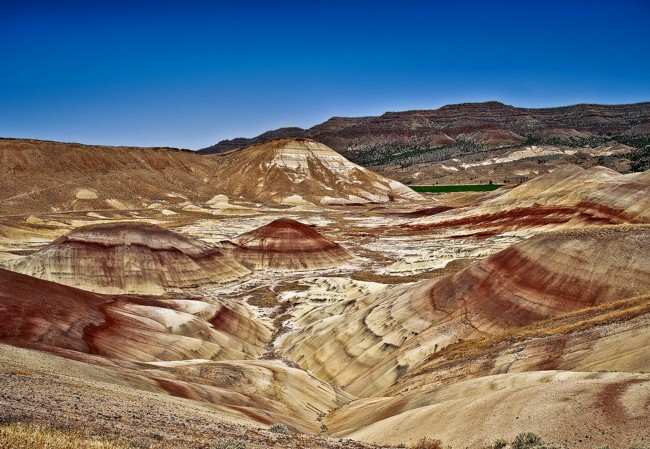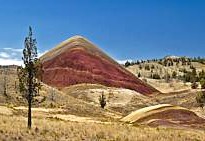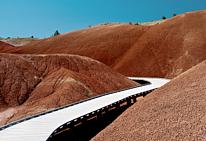|
Scenic USA - Oregon Painted Hills |

| Photos by Denny Barnes Denny Barnes Photography |
Divided into three separate sections, the John Day Fossil Beds National Monument is spread across Wheeler County in the Oregonís north-central region. Covering over 14,000 acres, three units called Sheep Rock, Painted Hills, and Clarno units harbor plant and animal fossils dating back 54 million years. 
This photo captures some of the dramatic scenery of the Painted Hills. Made up of ancient deposits of volcanic ash, the hills are mostly claystone soils. Plumes of ash were carried eastward for a 100 miles from Cascade volcanic activity, depositing layer upon layer of ash. This complex mixture of deposits contained various minerals which stained the soil that you see today. Depending on the moisture of the soil, the tints of red, yellow and buffs take on ever changing hues of color. Fossils of early horses, camels, and rhinoceroses have been discovered among these dense layers of claystone (a soil so dense that plants can't seem to gain a foothold). 
Due to its location in the rain shadows of the Cascade Range, the climate at John Day is classified as semi-arid, seeing only 9 to 18 inches of rain a year. Here, under the gaze of Sutton Mountain, Painted Hills trails are woven throughout this unique desert locale. Beginning at the Painted Hills Overlook, the Carroll Rim Trail climbs to a vantage point along the rim rock, offering a broad view of the Painted Hills. The Painted Cove Trail, a section that's wheelchair accessible over a boardwalk, allows all visitors to experience a close-up look at these colorful claystone hills.
Area Map

|
Additional Points of Interest |
|
Copyright © 2020 Benjamin Prepelka
All Rights Reserved
